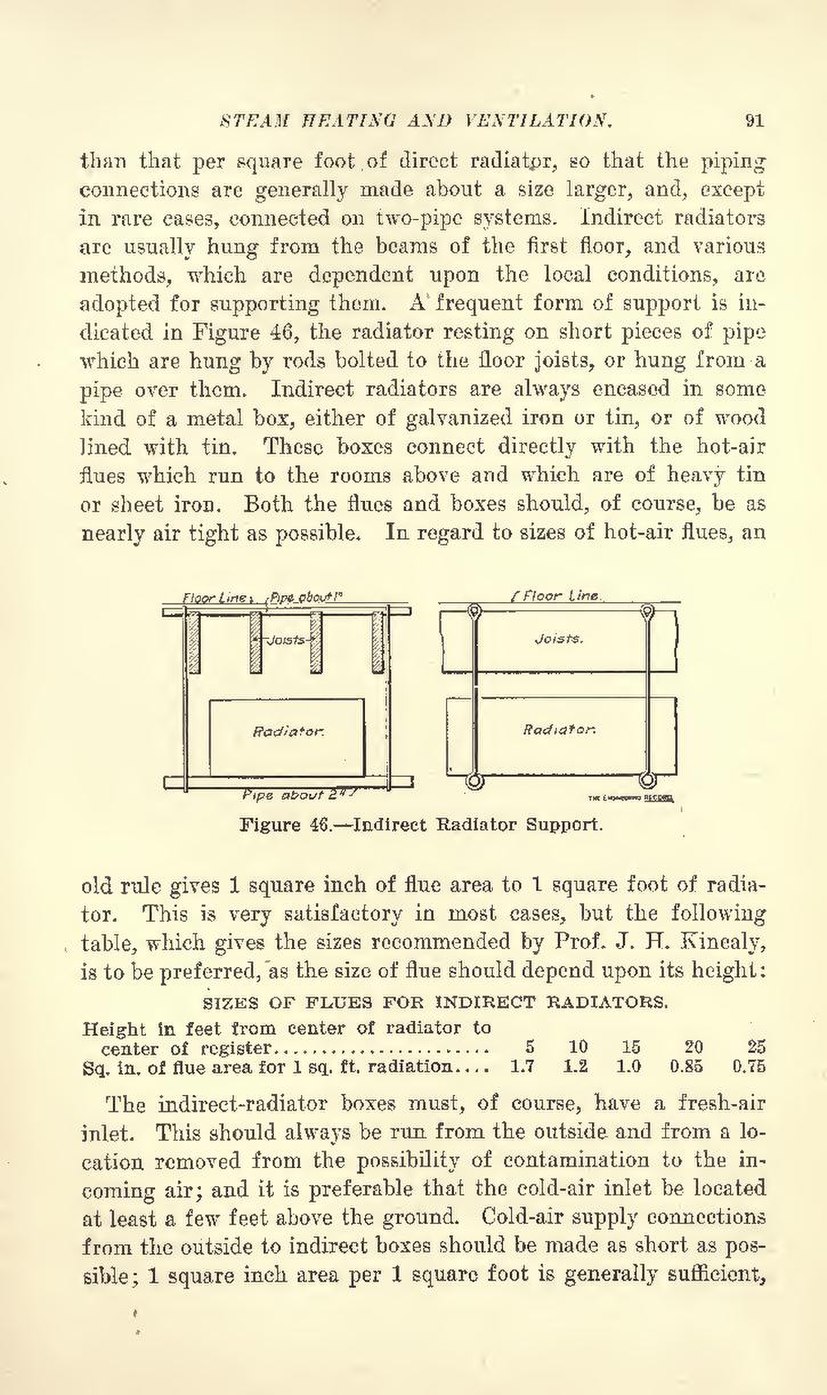than that per square foot of direct radiator, so that the piping connections are generally made about a size larger, and, except in rare cases, connected on two-pipe systems. Indirect radiators are usually hung from the beams of the first floor, and various methods, which are dependent upon the local conditions, are adopted for supporting them. A frequent form of support is indicated in Figure 46, the radiator resting on short pieces of pipe which are hung by rods bolted to the floor joists, or hung from a pipe over them. Indirect radiators are always encased in some kind of a metal box, either of galvanized iron or tin, or of wood lined with tin. These boxes connect directly with the hot-air flues which run to the rooms above and which are of heavy tin or sheet iron. Both the flues and boxes should, of course, be as nearly air tight as possible. In regard to sizes of hot-air flues, an

Figure 46.—Indirect Radiator Support.
old rule gives 1 square inch of flue area to 1 square foot of radiator. This is very satisfactory in most cases, but the following table, which gives the sizes recommended by Prof. J. H. Kinealy, is to be preferred, as the size of flue should depend upon its height:
| Height in feet from center radiator to center of register | 5 | 10 | 15 | 20 | 25 |
| Sq. in. of flue area for 1 sq. ft. radiation | 1.7 | 1.2 | 1.0 | 0.85 | 0.75 |
The indirect-radiator boxes must, of course, have a fresh-air inlet. This should always be run from the outside and from a location removed from the possibility of contamination to the incoming air; and it is preferable that the cold-air inlet be located at least a few feet above the ground. Cold-air supply connections from the outside to indirect boxes should be made as short as possible; 1 square inch area per 1 square foot is generally sufficient,
